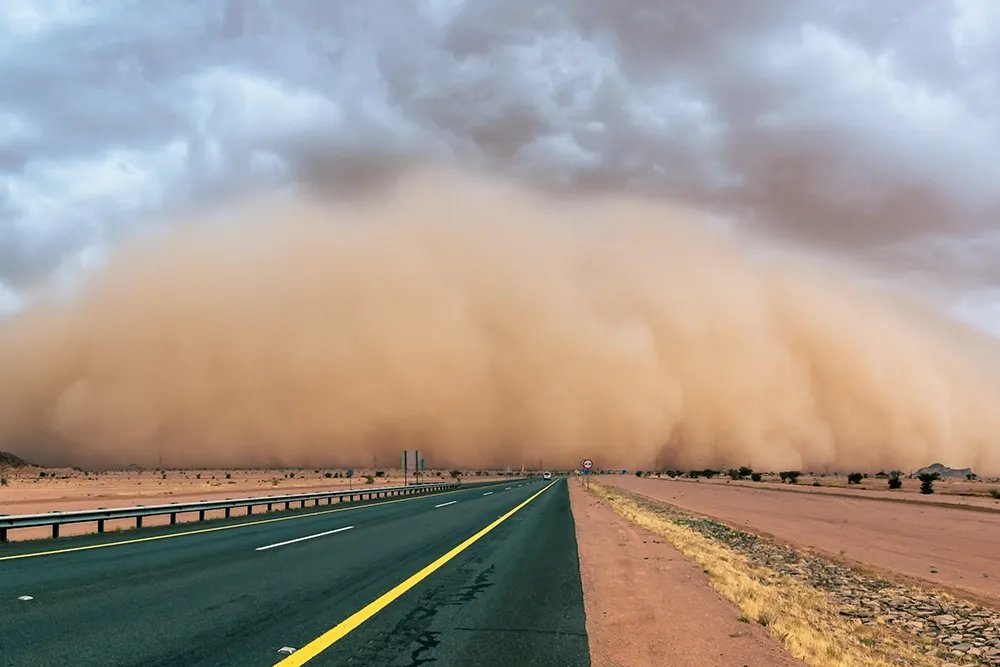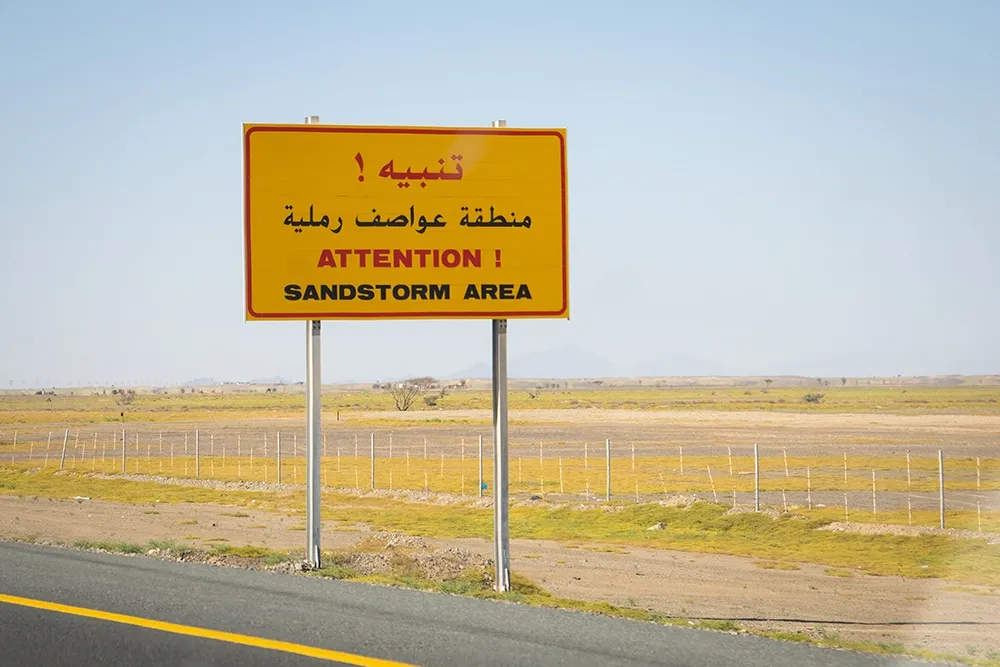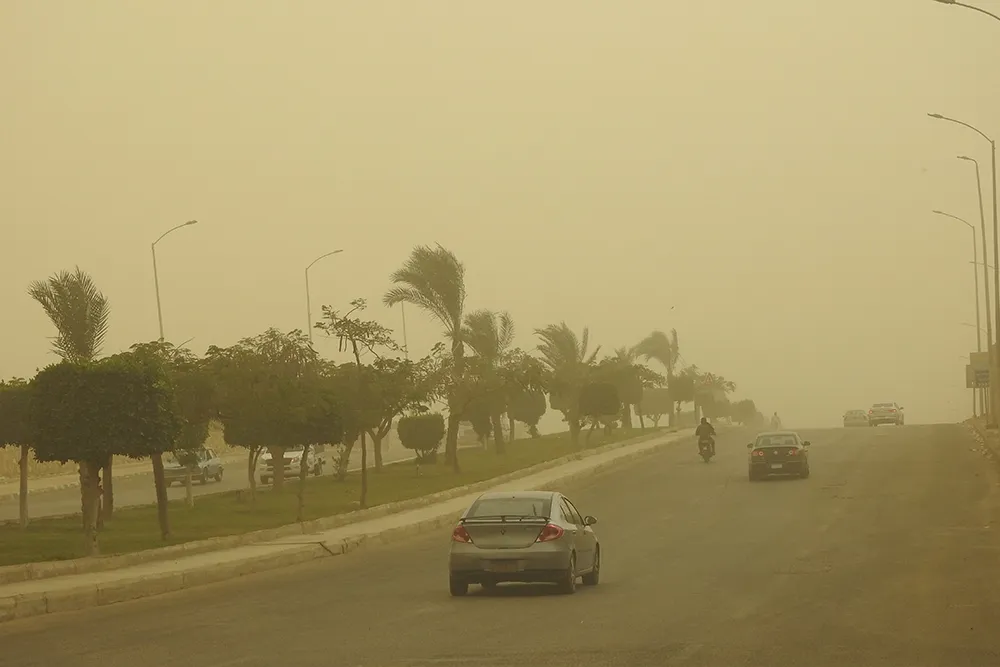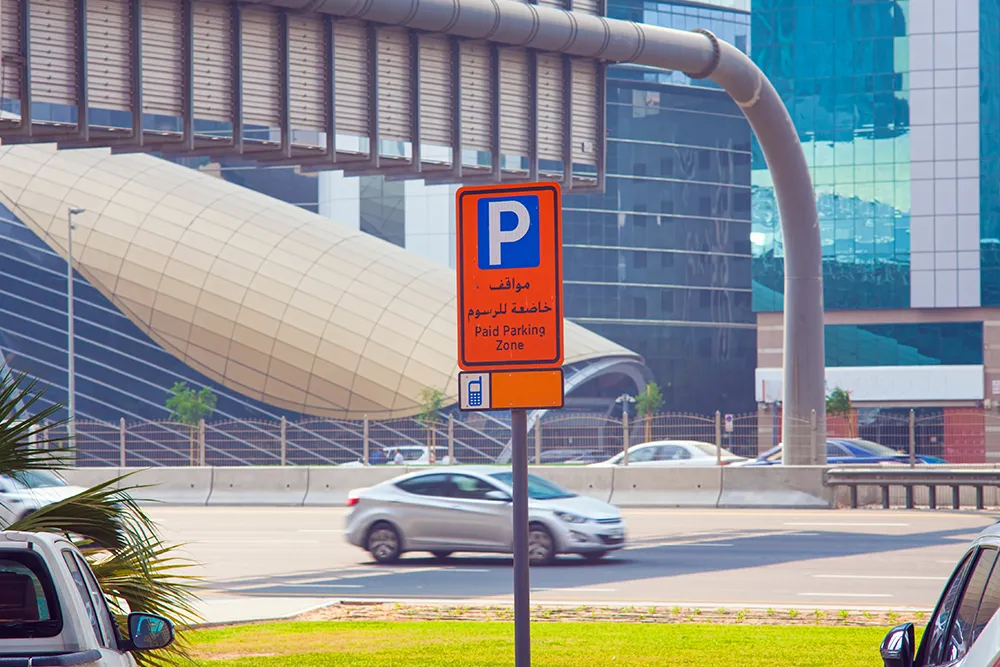Dubai is admired worldwide for its skyline, luxury living, and desert adventures; however, the same desert climate also presents its challenges, particularly the Dubai sandstorm. Every year, particularly during spring and summer, strong shamal winds sweep across the Arabian Peninsula, lifting huge amounts of dust and sand into the air. The result is a sandstorm in Dubai that can reduce visibility to a few hundred meters, disrupt road traffic, delay flights, and exacerbate respiratory health issues.
The effects of a UAE sandstorm go far beyond inconvenience. Clinics often see a rise in asthma cases, the Roads and Transport Authority (RTA) reports increased accidents, and daily life slows down. For this reason, knowing sandstorm safety tips Dubai is crucial whether you are a resident or just visiting.
Why Sandstorms Happen in Dubai
Sandstorms are part of life in the desert. In Dubai, they occur mainly due to shamal winds, powerful northwesterly gusts that carry fine sand across the desert. Combined with summer’s extreme heat, which often exceeds 45°C, the environment becomes ideal for frequent Dubai sand storm events.
According to the UAE’s National Center of Meteorology (NCM), visibility during severe sandstorm Dubai events can fall below 500 meters, creating hazards for both air and road travel.
RTA Dubai confirms that accidents increase by nearly 30% during sandstorms in Dubai, mainly due to reduced visibility and unsafe driving practices.

The 2018 Dubai Sand Storm
In March 2018, a strong sandstorm in Dubai blanketed the city in thick haze. Flights at Dubai International Airport were delayed, while emergency services recorded a 25% rise in road accidents. Hospitals also noted a surge in asthma patients struggling to breathe in the dusty air.
This case study demonstrates why sand storm safety tips Dubai emphasizes, like staying indoors, protecting your breathing, and driving cautiously, are not optional but vital.
Sand Storm Safety Tips at Home
Knowing how to keep safe in a sandstorm begins with your home environment. When a Dubai sand storm hits:
- Close all windows, doors, and ventilation gaps to prevent dust from entering.
- Set your air conditioner to recirculation mode to block outside air.
- Use air purifiers with HEPA filters to improve indoor air quality.
- Roll up carpets or cover them—sand particles settle quickly and can worsen allergies.
- After the storm, vacuum with a HEPA filter and wipe surfaces with disinfectant, since dust can carry bacteria.
Following these sand storm safety tips Dubai residents trust ensures your home remains clean and safe even after multiple storms.
Sandstorm Dubai Driving Precautions
One of the riskiest situations during a UAE sandstorm is being behind the wheel. If you must drive:
- Slow down and keep a larger distance from the vehicle ahead.
- Switch on low-beam headlights or fog lights—never use high beams.
- Keep all windows shut and the AC on recirculation.
- Avoid sudden braking, as sandy roads can reduce traction.
- If visibility becomes too low, pull over safely at the side of the road, not in active lanes.
During the March 2018 Dubai sandstorm, authorities urged drivers to delay trips after multiple pile-ups were reported due to near-zero visibility.
Outdoor Safety During a Dubai Sand Storm
Sometimes, you may get caught outdoors during a sandstorm in Dubai. Here’s what you are supposed to do in a sand storm:
- Cover your nose and mouth with a mask or a damp cloth to reduce dust inhalation.
- Protect your eyes with sunglasses or goggles.
- Seek shelter immediately, whether indoors or inside a vehicle.
- Drink plenty of water, as hot, dusty air accelerates dehydration.
- People with asthma or allergies should always keep inhalers and medications handy.
Health Risks of Sandstorms
The health effects of a sandstorm Dubai can range from minor irritation to serious medical emergencies:
- Respiratory issues such as asthma attacks or bronchitis flare-ups.
- Eye irritation and redness due to sand particles scratching the cornea.
- Skin dryness, rashes, and itchiness.
- Dehydration from exposure to hot, dusty air.
Hospitals in Dubai regularly issue alerts during UAE sandstorm season advising vulnerable groups, children, the elderly, and those with chronic lung conditions to avoid outdoor exposure.
A sand storm in Dubai is part of the desert lifestyle, but with preparation, its impact can be minimized. By following sand storm safety tips Dubai experts recommend—such as sealing your home, avoiding unnecessary travel, and carrying protective gear—you can stay safe even in the harshest conditions.

Whether you’re a long-term resident or a tourist planning your first trip, knowing how to protect yourself from a sandstorm is an essential survival skill in the UAE. With awareness, caution, and a little preparation, a Dubai sandstorm becomes manageable rather than overwhelming.
FAQs
- How to keep safe in a sand storm?
Stay indoors if possible. If outside, wear a mask, protect your eyes, and find shelter quickly.
- What are you supposed to do in a sand storm?
Limit exposure by covering your mouth and eyes, staying hydrated, and avoiding travel until conditions improve.
- How long does a sandstorm last in Dubai?
Most Dubai sandstorms last a few hours, but some severe events can continue for an entire day.
- Can sandstorms affect flights in Dubai?
Yes. Severe UAE sandstorms often delay or divert flights due to poor visibility.
- Are sandstorms harmful to health?
Yes. Dust particles in a sand storm can trigger asthma, allergies.








